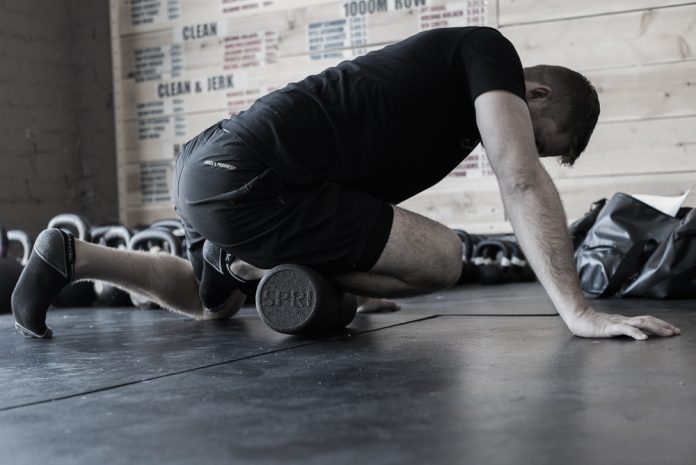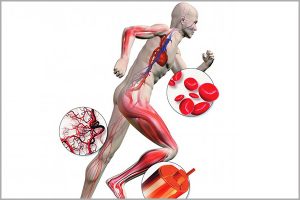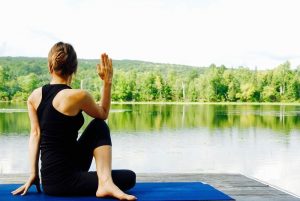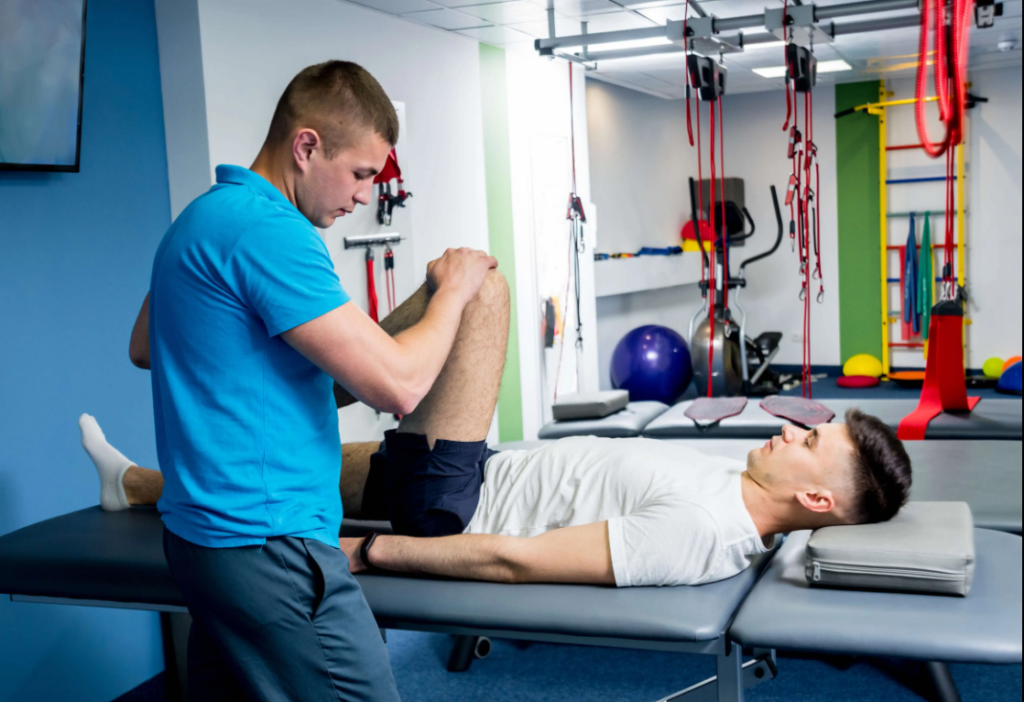
Training is a process that takes its toll on the body. Whenever we take part in physical training, our bodies go through a myriad of changes. Such changes are a part of one of our bodies’ most important abilities – adaptation.
These “meat wagons” of ours, as Joe Rogan refers to them, have a miraculous ability to create equilibrium whenever they’re out of balance. So, after our bodies handle the shock of training, it’s time for them to enter BJJ recovery mode and start re-balancing.
During any physical exercise, our bodies put in a real shift to get us through the increased demands we place. Most people are aware of the role our muscular and skeletal systems play during training but often oversee the finer physiological processes that run in the background.
Training Physiology
For simplicity’s sake, we’re going to divide how our bodies respond to training into two parts: One is the physical aspect of handling the increased load that the body is under. The second is the physiological, encompassing all the biochemical processes that take place during stress.
Our musculoskeletal system is a work of art, designed to adapt to a wide variety of situations and handle huge outside influences. The skeletal system forms the structure upon which our bodies are based, while the muscles are tasked with dynamic motion.
The muscles are a physiological furnace, demanding substrate for every contraction that they make. The intensity and duration of they work at is by the available energy system for the task at hand. That, however, is a subject for another day.
For now, it’s suffice to say that every muscular action burns “fuel” and wears and tears the tissue. Recovery is the process that helps replenish fuel and repair the tissues in question.
Physiologically speaking, the stress of training is handled by countless simultaneous processes. Hormones “go haywire”, the liver is working overtime and the lungs and heart get a beating. Most of the fuel readily available to our bodies is stored in the muscles and liver in the form of glycogen.
These depots are quickly spent during exercise, depending on the intensity. The heart and lungs are tasked with delivering oxygen to the working tissues to complete the equation. However, the capacity and duration of work that these systems are capable of, are limited and have to be replenished.
The Role of Proper BJJ Recovery
All of the systems mentioned above are not capable of working constantly without the need for a break. On the contrary, their ability to sustain the increased demands is very limited and they require adequate rest. This means ceasing all external sources of stress (training) have to stop for our bodies to reset. This is where BJJ recovery comes into play.
Recovery is our bodies’ ability to bring order back to chaos and return the body to equilibrium. However, recovery cannot take place in the same time as training stress, which takes careful planning. BJJ recovery is a highly trainable quality that has to be an integral part of any strength and conditioning program.
Recovery starts with repair. As soon as the training stimulus ceases, the body aims to return to balance as soon as possible. First and foremost, the body aims to rest the heart and lungs and lower the working heart rate into more acceptable ranges.
From there, it’s time to start mending and refilling, by focusing on replenishing glycogen and fixing broken-down muscle tissue. All of these processes that define our recovery ability can be improved and optimized with a correct approach.
The following options are by no means the most comprehensive, nor the only available tools to speed up BJJ recovery. They are, however, the staples of the body’s ability to return to homeostasis:
Mobility Work
Stretching is probably the first thing that springs to mind when you hear the word ‘recovery’. Post-workout stretching seems to be taken for granted though, and done in a completely wrong manner. Stretching needs to be perceived as a tool to aid recovery, not just a ritualistic routine to end training.
Despite what your PT teacher told you when you were in primary school, static stretching is not the only way to stretch. Sure, static stretching has its uses, but going deep into a hamstring stretch shouldn’t be the first thing done after rolling. Recovery should be aided by our post-workout mobility protocol, not hindered by it. Going too deep into inappropriate stretches will do more harm than good.
The adequate approach here is a combination of active and static stretching, combined together. It can be done as a sequence of moves or as a yoga-style flow. This way, the muscles get both lengthening and a massage, resulting in faster BJJ recovery. Another great mobility option is oscillated stretching, meaning moving in a short range of motion while holding a stretch position.
Self Myofascial Release (SMR)
Going for a massage is by far the best option for athletes, but unfortunately rarely affordable for most. This is where Self Myofascial Release comes in. SMR is a technique that utilizes different tools in order to treat trigger points in the muscles.
Apart from the ability to resolve muscle knots (trigger points), full-body SMR also calms the nervous system down. The tools most often used are foam rollers and lacrosse balls. There are a bunch of ways to use them and most of them work.
The rule of thumb is to avoid feeling pain whenever you’re doing mobility work. Slight discomfort is OK, especially with SMR since the point is to dissolve the muscle knots formed during training.
It’s a very useful technique that immensely helps BJJ recovery and should be a part of your post workout routine. Still, try and allow someone who is a licensed chiropractor to professionally fix you up at least once a month.
The Right Kind of Shower
Post-workout showers are not just a way to wash and clean your smelly body. Contrast therapy is a technique of alternating hot and cold water to aid recovery. The concept behind the technique is that the warm water widens blood vessels, increasing blood flow, while the cold does the opposite, causing constriction of the vessels.
As an added benefit, the lymphatic system gets the same treatment as the blood vessels. Contrast showers allow the body to recover, alleviating soft tissue trauma, muscle spasms, and soreness.
A simple way to approach contrast showers for BJJ recovery is to build a routine. Remember to always begin with hot water. Start with a small temperature range, around 10°F at first and ultimately build up to ranges of 45°F. Go for 40 seconds of hot (~97°F), followed by 20 seconds of cold for the first week (~86°F). Do this for a total of three times. Increase the range the following week.
Active Recovery
Although most people won’t find it hard to get in a full day of rest, some athletes simply must do work every day. In either case, active recovery is a great option to get your body back in tune. Just be careful not to be too active and turn it into a full-blown training session.
For those of a lazier predisposition, I recommend taking the dog for a walk, going for an easy hike, or a light swim if you’re lucky enough to live by the beach. Those who want to be more active may go for a yoga session or even have a bit of outdoor fun at the monkey bars.
Remember to make sure you’re aware of why you’re doing all of it in the first place – recovery. So a walk in the park with your significant other is probably a better option than doing a CrossFit WOD at the bars.
Nutrition
The last piece of the puzzle is nutrition. How we eat after working out is crucial to our recovery ability. Proper nutrition will result in timely and correct glycogen repletion and allow the body’s systems to go into BJJ recovery mode. Food is the fuel that drives our training, but it’s also the building block of our tissues.
Getting the right stuff in at the right time is crucial for complete recovery. The main idea is to stop protein breakdown and replenish glycogen stores. It doesn’t matter if you’re having a solid or a replacement meal after training – just make sure you get it in a hurry. By hurrying I mean to go eat as soon as possible after working out.
To prevent protein breakdown aim to keep insulin levels high after training. Insulin has anti-catabolic properties which are essential for post BJJ recovery. Getting insulin levels up puts a stop to protein breakdown and shifts the focus towards protein synthesis.
For glycogen repletion, it’s again, all about the insulin. Two things are crucial in the post-workout window: an adequate amount of carbohydrates being available and keeping insulin high. The first is the substrate that allows for glycogen synthesis to take place. The second is the method that allows the ingested carbs to enter the muscles.
R&R
As bodybuilders often say “you don’t build muscle in training, you build it when you’re resting“. Although as grappling athletes our needs are different than bodybuilders, the same BJJ recovery principles still apply. Rest is the best way to ensure that our bodies have the time to repair the damage we did by training. So, get some quality shut-eye and get straight back on the mats!
Treat Yourself!
You do not have to do each and every recovery method we listed above every day in order to recover from your BJJ and supportive physical training. Be free to pick one, two, or perhaps three methods and cycle them, throughout the week.
For example, you could opt for two SMR sessions per week, but contrast showers and mobility work can be daily occurrences. What matters is showing your aching body some attention, at least if you want it to keep operating at a high pace on the mats.
How to Fix your Low Back Pain and Never Feel it Again – Simple Exercises
https://bjj-world.com/3-common-stretching-mistakes/


![Darce Choke Encyclopedia – Origins, Mechanics and Variations [2025] BJJ, choke, Brabo, BJJ Darce Choke, D'arce Choke, Darce BJJ Choke](https://bjj-world.com/wp-content/uploads/2017/11/JungPoirierLeeYahoo-218x150.jpg)














![Slicin’ Calves Mikey Musumeci DVD Review [2025] Slicin' Calves Mikey Musumeci DVD Review](https://bjj-world.com/wp-content/uploads/2025/04/slicin-calves-mikey-musumeci-dvd-review-218x150.png)
![Jiu-Jitsu For Old Guys Guard Retention Bernardo Faria DVD Review [2025] Jiu-Jitsu For Old Guys Guard Retention Bernardo Faria DVD Review](https://bjj-world.com/wp-content/uploads/2025/03/old-guys-guard-retention-bernardo-faria-dvd-review-218x150.png)
![X-Guard Trickery Kyle Sleeman DVD Review [2025] X-Guard Trickery Kyle Sleeman DVD Review](https://bjj-world.com/wp-content/uploads/2025/03/x-guard-trickery-kyle-sleeman-dvd-review-218x150.png)
![Countering with Crab Ride Anthony Budion DVD Review [2025] Countering with Crab Ride Anthony Budion DVD Review](https://bjj-world.com/wp-content/uploads/2025/03/countering-with-crab-ride-anthony-budion-dvd-review-218x150.png)
![Closet Closed Guard Craig Jones DVD Review [2025] Closet Closed Guard Craig Jones DVD Review](https://bjj-world.com/wp-content/uploads/2025/03/closet-closed-guard-craig-jones-dvd-review-218x150.png)
![Xanadu Back Takes Levi Jones-Leary DVD Review [2025] Xanadu Back Takes Levi Jones-Leary DVD Review](https://bjj-world.com/wp-content/uploads/2025/03/xanadu-back-takes-levi-jones-leary-dvd-review-218x150.png)
![Get Off My Legs Gringo Craig Jones DVD Review [2025] Get Off My Legs Gringo Craig Jones DVD Review](https://bjj-world.com/wp-content/uploads/2025/03/get-off-my-legs-gringo-craig-jones-dvd-review-324x235.png)

![Baseball Chokes From Everywhere Magid Hage DVD Review [2025] Baseball Chokes From Everywhere Magid Hage DVD Review](https://bjj-world.com/wp-content/uploads/2025/01/baseball-chokes-from-everywhere-magid-hage-dvd-review-100x70.png)
![The Bear Trap Nicolas Renier DVD Review [2025] The Bear Trap Nicolas Renier DVD Review](https://bjj-world.com/wp-content/uploads/2025/01/the-bear-trap-nicolas-renier-dvd-review-100x70.png)
![Grappling Takedown Dominance Brandon Ruiz DVD Review [2025] Grappling Takedown Dominance Brandon Ruiz DVD Review](https://bjj-world.com/wp-content/uploads/2025/01/grappling-takedown-dominance-brandon-ruiz-dvd-review-100x70.png)
![EMU Guard 2.0 Benjamin Power DVD Review [2024] EMU Guard 2.0 Benjamin Power DVD Review](https://bjj-world.com/wp-content/uploads/2024/11/emu-guard-2-0-benjamin-power-dvd-review-100x70.png)


![Mastering The Crucifix Alexandre Pereira DVD Review [2025] Mastering The Crucifix Alexandre Pereira DVD Review](https://bjj-world.com/wp-content/uploads/2025/01/mastering-the-crucifix-alexandre-pereira-dvd-review-100x70.png)
![Ginastica Natural Alvaro Romano DVD Review [2024] Ginastica Natural Alvaro Romano DVD Review](https://bjj-world.com/wp-content/uploads/2024/12/ginastica-natural-alvaro-romano-dvd-review-100x70.png)




![Position And Submission Escapes Craig Funk DVD Review [2025] Position And Submission Escapes Craig Funk DVD Review](https://bjj-world.com/wp-content/uploads/2025/02/position-and-submission-escapes-craig-funk-dvd-review-100x70.png)


![Reverse Armlock Magid Hage DVD Review [2024] Reverse Armlock Magid Hage DVD Review](https://bjj-world.com/wp-content/uploads/2024/12/reverse-armlock-magid-hage-dvd-review-100x70.png)




![Complete Front Headlock System Michael Pixley DVD Review [2024] Complete Front Headlock System Michael Pixley DVD Review](https://bjj-world.com/wp-content/uploads/2024/10/front-headlock-system-michael-pixley-dvd-review-100x70.png)

![Arm Bar It All Shawn Melanson DVD Review [2025] Arm Bar It All Shawn Melanson DVD Review](https://bjj-world.com/wp-content/uploads/2025/03/arm-bar-it-all-shawn-melanson-dvd-review-100x70.png)
![Welcome To The Darce Side Travis Moore DVD Review [2025] Welcome To The Darce Side Travis Moore DVD Review](https://bjj-world.com/wp-content/uploads/2025/01/welcome-to-the-darce-side-travis-moore-dvd-review-100x70.png)
![The Whole Omoplata Enchilada Lyanne Perez DVD Review [2024] The Whole Omoplata Enchilada Lyanne Perez DVD Review](https://bjj-world.com/wp-content/uploads/2024/11/whole-omoplata-enchilada-lyanne-perez-dvd-review-100x70.png)
![Just Pass Jay Rodriguez DVD Review [2024] Just Pass Jay Rodriguez DVD Review](https://bjj-world.com/wp-content/uploads/2024/11/just-pass-jay-rodriguez-dvd-review-100x70.png)
